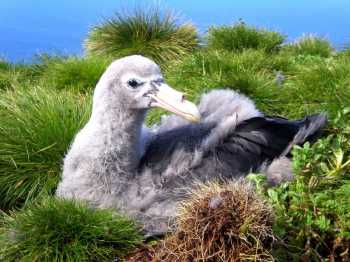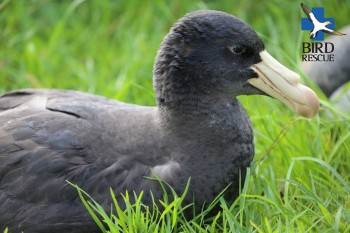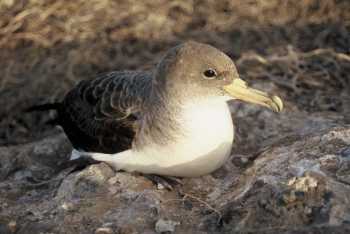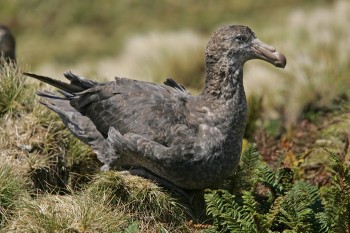Catharine Horswill (British Antarctic Survey, Cambridge, UK) and colleagues have published open access in the Journal of Animal Ecology on how giant petrels Macronectes spp. may be causing declines in numbers of Macaroni Penguins Eudyptes chrysolophus.
The paper’s summary follows:
- Understanding the demographic response of free-living animal populations to different drivers is the first step towards reliable prediction of population trends.
- Penguins have exhibited dramatic declines in population size, and many studies have linked this to bottom-up processes altering the abundance of prey species. The effects of individual traits have been considered to a lesser extent, and top-down regulation through predation has been largely overlooked due to the difficulties in empirically measuring this at sea where it usually occurs.
- For 10 years (2003–2012), macaroni penguins (Eudyptes chrysolophus) were marked with subcutaneous electronic transponder tags and re-encountered using an automated gateway system fitted at the entrance to the colony. We used multistate mark–recapture modelling to identify the different drivers influencing survival rates and a sensitivity analysis to assess their relative importance across different life stages.
- Survival rates were low and variable during the fledging year (mean = 0·33), increasing to much higher levels from age 1 onwards (mean = 0·89). We show that survival of macaroni penguins is driven by a combination of individual quality, top-down predation pressure and bottom-up environmental forces. The relative importance of these covariates was age specific. During the fledging year, survival rates were most sensitive to top-down predation pressure, followed by individual fledging mass, and finally bottom-up environmental effects. In contrast, birds older than 1 year showed a similar response to bottom-up environmental effects and top-down predation pressure.
- We infer from our results that macaroni penguins will most likely be negatively impacted by an increase in the local population size of giant petrels. Furthermore, this population is, at least in the short term, likely to be positively influenced by local warming. More broadly, our results highlight the importance of considering multiple causal effects across different life stages when examining the survival rates of seabirds.

A Southern Giant Petrel kills a penguin at sea, photograph by Peter Ryan
Reference:
Horswill, C., Matthiopoulos, J., Green, J.A., Meredith, M.P., Forcada, J., Peat, H., Preston, M., Trathan, P.N. & Ratcliffe, N. 2014. Survival in macaroni penguins and the relative importance of different drivers: individual traits, predation pressure and environmental variability. Journal of Animal Ecology DOI: 10.1111/1365-2656.12229.
John Cooper, ACAP Information Officer, 31 May 2014

 English
English  Français
Français  Español
Español 





